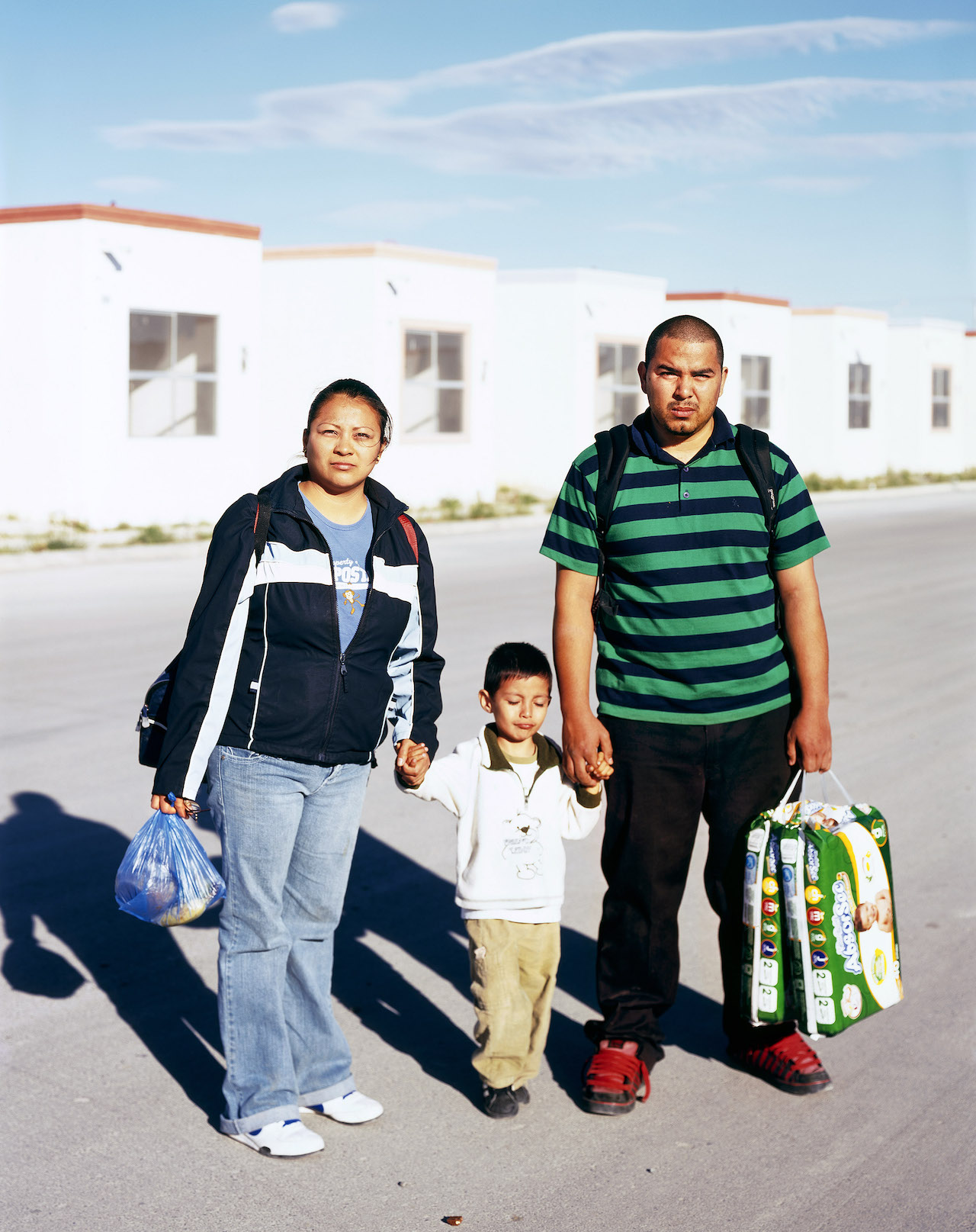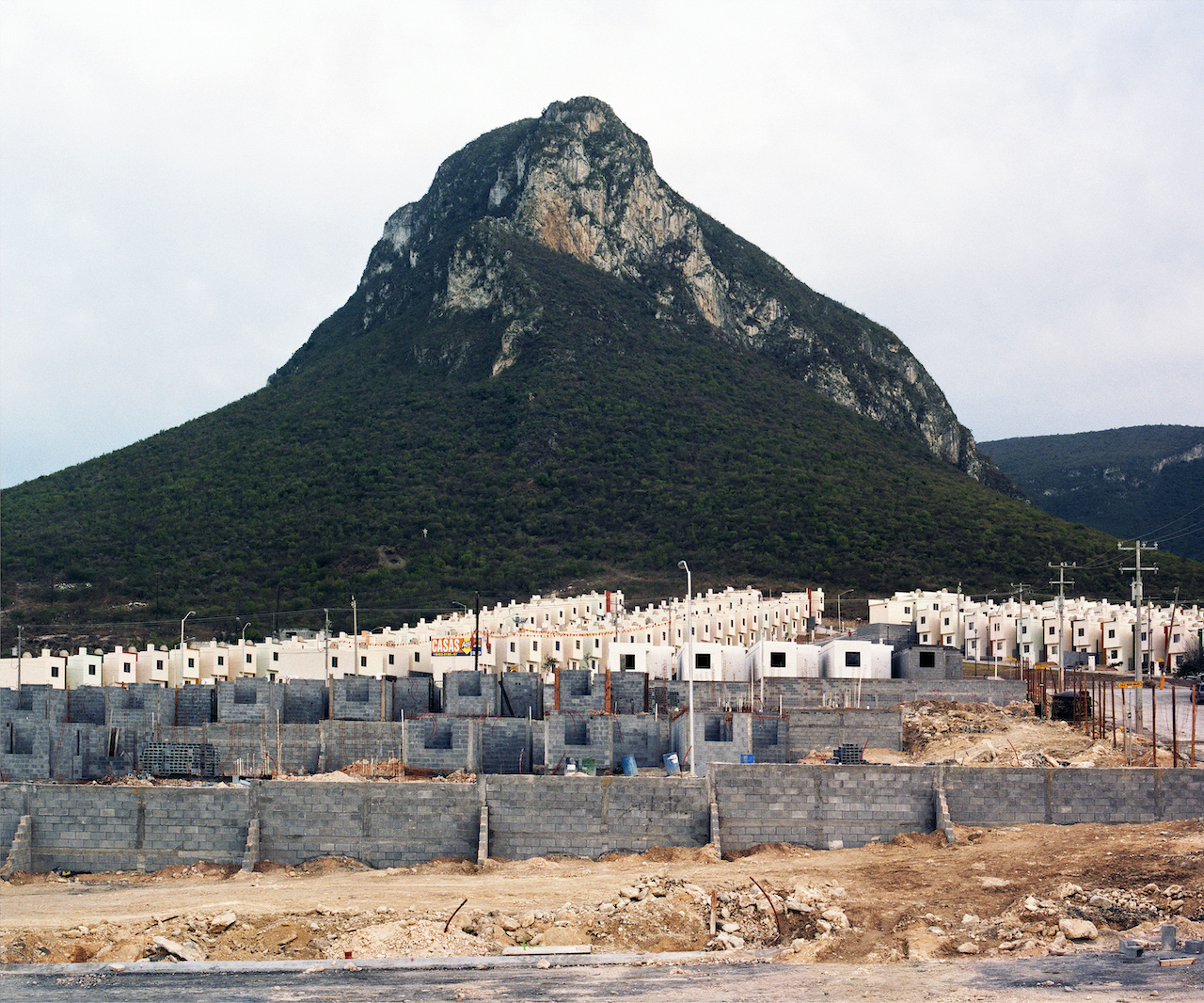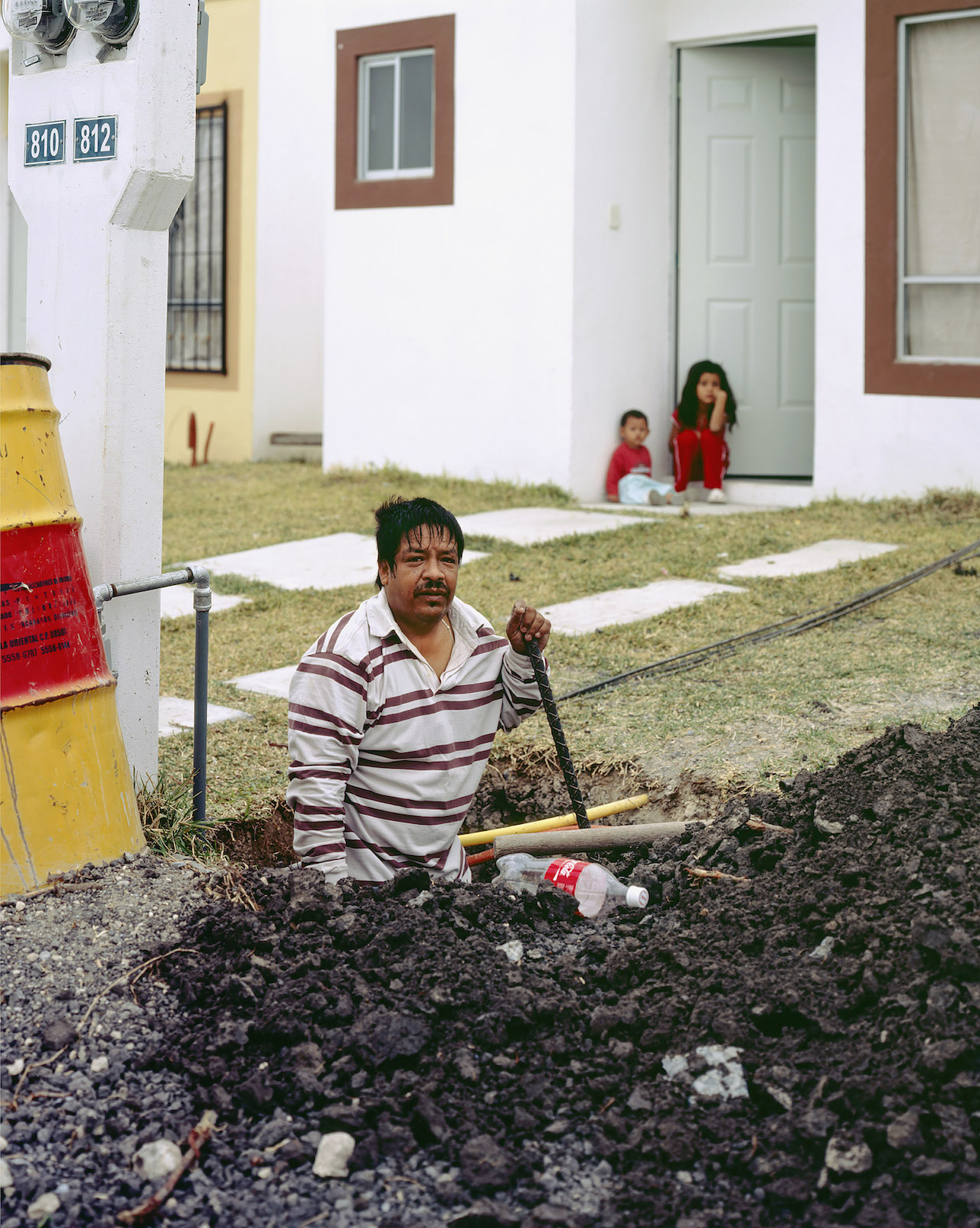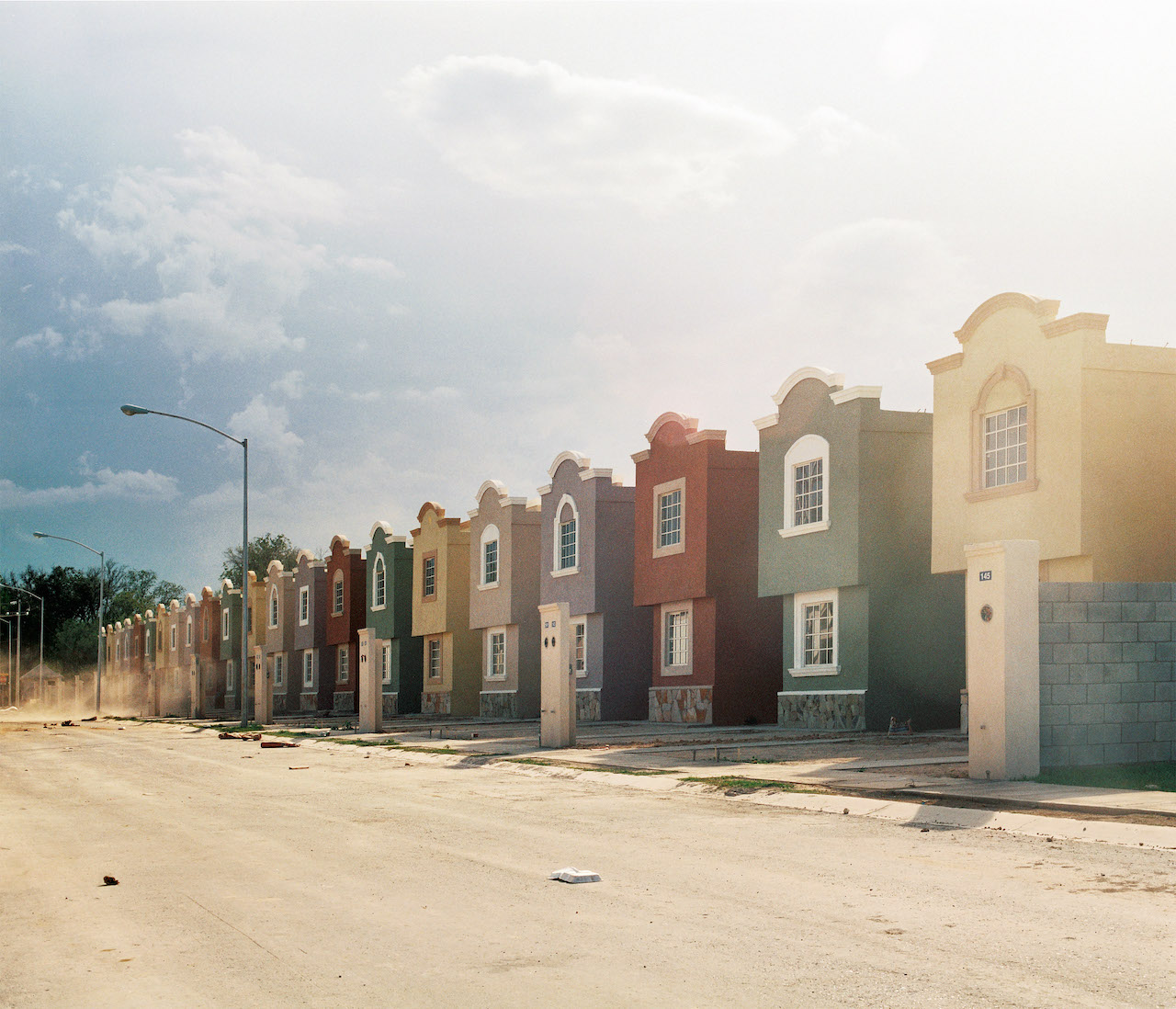One of the four nominations for the Deutsche Börse award, A Small Guide to Homeownership is an ironic guide into the home-owning process, exposing the dangers of urban growth
Working as a digitiser at a photography centre in 2004, Alejandro Cartagena became obsessed with northern Mexico’s fluctuating landscape. As he watched suburban developments sprout up across the urban sprawl of Monterrey, he was gripped by how these new homes interrupted and influenced the city’s infrastructure, environment, and communities. His 360-page book A Small Guide to Homeownership, documents this suburbanisation over the course of 15 years, raising questions about its origins and consequences: “Why are these houses here? What is the process of getting them? What are the environmental impacts of this over-development?”
With its yellow cover, textbook paper, and sardonic title, the publication parodies the ‘how to’ book genre, guiding readers through the homeowning process as a way of exposing the dangers of urbanisation and what he calls “the propagandistic ideal that has been pushed in 21st century Mexico”. Cartagena’s multimedia collages reveal the dark, dysfunctional parts of homeownership in northern Mexico: the proliferation of cookie-cutter developments, the privatisation of regulatory processes, and the peddling of an American suburban ideal.
Cartagena is one of four artists shortlisted for this year’s Deutsche Börse Photography Foundation Prize, and is currently exhibiting the work at The Photographers’ Gallery, alongside nominees Poulomi Basu, Cao Fei and Zineb Sedira. He explains that the exhibition has “two parallel narratives. The books are all the same height, so they feel like a constant line and narrative. And then the photographs are a little bit higher, and that feels like another narrative”. The book recontextualises Cartagena’s images, adding layers of chaos and dysfunction to his striking landscapes and portraits.
The Mexican-Dominican artist juxtaposes his photographs with cropped advertisements and historical texts that contradict and darken the ideal of homeownership. In one image, a man stands exhausted after digging a large hole in his front yard, while on the adjacent page an excerpt from an American textbook advises people to meet new neighbours by hosting housewarming parties. “The book itself is very chaotic and very dysfunctional which kind of mimics that cultural adaptation that we did in Mexico of an American ideal. It’s like, how does that look? This clean-cut idea of homeownership in the US: bring it to Mexico and it just falls apart,” says Cartagena.
The expansiveness of the project reflects Cartagena’s self-prescribed obsession with information. “It was like field work. I would understand something new, or think that I understood something new, about landscape and about suburbanisation and development and urban theory. And then I would go: Okay, let me see how that looks.” His book tracks dramatic changes to landscapes and livelihoods as well as the slow and arduous bureaucratic processes that happen behind the scenes: bureaucrats issuing loans, people signing leases. Cartagena captures everything, leaving the viewer to “connect dots that maybe were not meant to be connected together”. He describes this invitation as “the poetic sense of contemporary documentary”.
Cartagena sees cities as a reflection of culture, of “human behaviour and human ideals”. By photographing the built environment, he documents not only the landscapes of the country, but its histories, ideas and people. “I live in a city that somebody dreamt of 70 years ago, and now I’m trapped in their dream. I think that it is fascinating to think about it that way. But it’s also very scary. How are these cities that we live in being decided? And are we all in agreement that that’s the way we want to live? Or do we just feel left out and powerless amongst other people’s dreams?” Cartagena’s layered, careful images ask as many questions as they answer.
The Deutsche Börse Photography Foundation Prize 2021 exhibition is currently on display at The Photographers’ Gallery, London, until 26 September 2021.
A Small Guide to Homeownership is published by The Velvet Cell.




